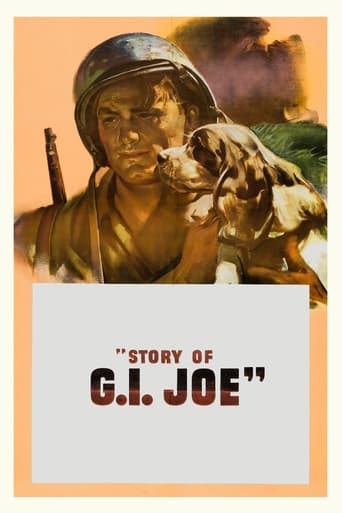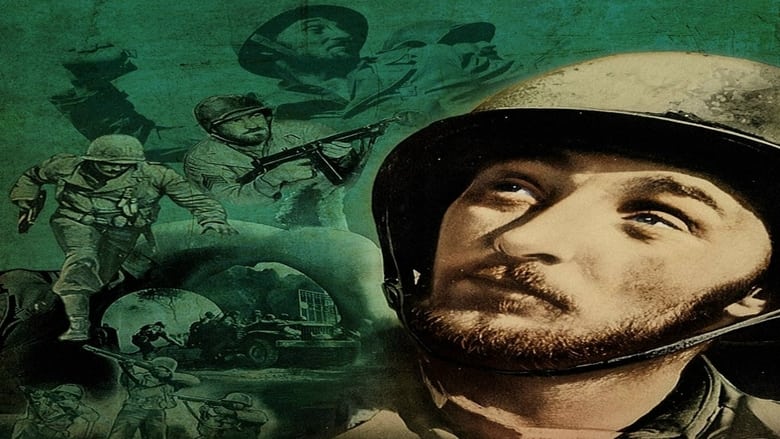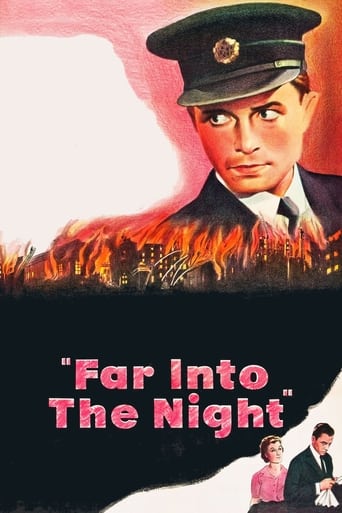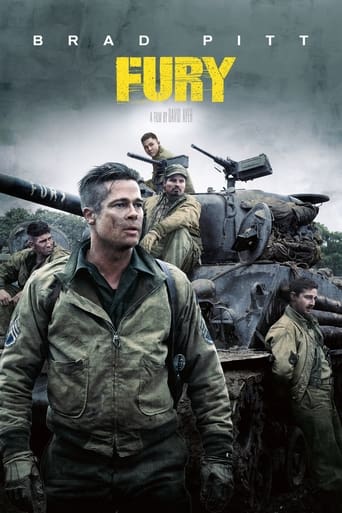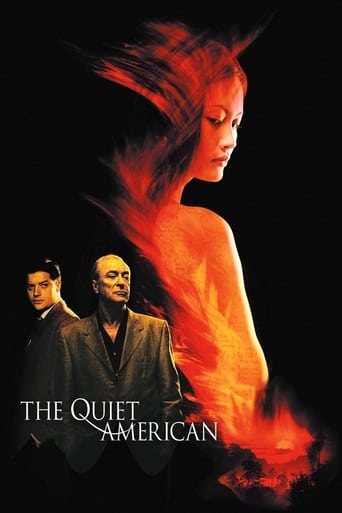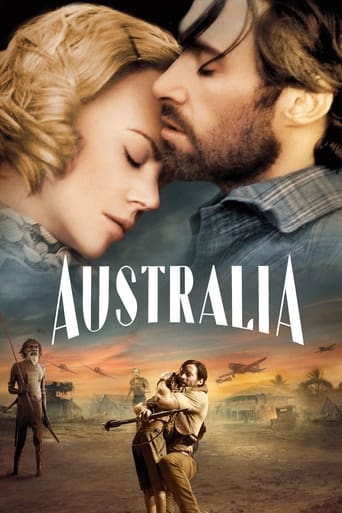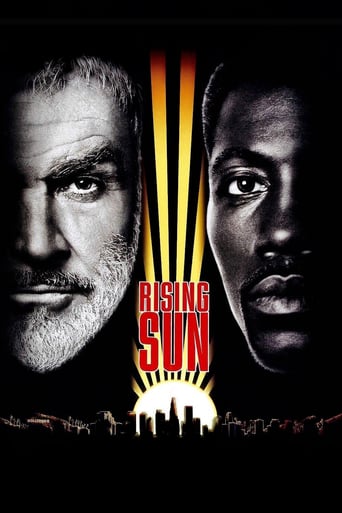Story of G.I. Joe (1945)
War correspondent Ernie Pyle joins Company C, 18th Infantry as this American army unit fights its way across North Africa in World War II. He comes to know the soldiers and finds much human interest material for his readers back in the States. Preserved by the Academy Film Archive in partnership with The Film Foundation in 2000.
Watch Trailer
Cast


Similar titles
Reviews
Boring
A waste of 90 minutes of my life
While it doesn't offer any answers, it both thrills and makes you think.
It really made me laugh, but for some moments I was tearing up because I could relate so much.
WE RECALL SEEING this in the very early 1950's on our Dumont B & W. At that time this was barely a 5 year old film. Even though the old birth certificate still reads 11/02/46, we're able to pinpoint the approximate time by these two incontrovertible facts: a) our family still lived at 4402 S. Shields in Chicago's Fuller Park neighborhood (moved out Labor Day weekend, 1952). b) We had gotten our TV set not long before, it was early 1950.WE HAD THE good fortune to have parents who took the time to both share viewing times as well as explaining to us what was the relationship of such a film, as THE STORY OF G.I. JOE. to our recent history I should not be any surprise that the name of Ernie Pyle (1900-45) should forever be emblazoned in our memory.HAVING JUST SCREEND this production for we the first time in years, we must commit our impressions to the page for even our highly limited posterity.FROM THE GET go, it is obvious that there was a great deal of painstakingly tedious effort to make this as realistic a war picture as was possible. Although no one could call kit a "blockbuster", neither was it a poverty row-type pot boiler. Never do either the sets, the equipment nor the combat troops look like anything other than what it's supposed to be. In this case, the setting is Southern Italy, along the Apian Way headed to Roma. (As well as the previous Tunisian & Sicilian locales)THERE IS Absolutely no sugar coating of the grim and fate driven story of what we've come to know as the "Citizen Soldier"; being the millions of ordinary guys who took time out from their lives back home in order to free a world held captive to internal conspiracy called Fascism; being served fresh by Nazi Germany, Fascist Italy, Imperial Japan and their satellite states.THE MAIN STORY element of the story is the concentration on the individual. In keeping with the style and subject matter that Mr. Pyle committed in Pulitzer Prize winning fashion, it was done as a both a chronicle as well as an homage to all those who'd walked the walk.ONE PARTICULARLY INTERESTING dramatic device was used to serve as a link between various characters' stories and at the same time present all of us in the audience a metaphor about survival. That would be (and is) the use of a little orphaned puppy. He is at first forbade by Lt. Walker (Robert Mitchum), who relents almost immediately. The original soldier caring for the little pooch is killed and the pup finds himself being passed around from soldier to soldier, never finding himself in harm's way. (We'd have named him 'Survivor.')THERE ARE SOME outstanding performances turned in here. Mr. Mitchum received an Oscar nomination for Best Supporting Actor and no one could have done a better characterization than Burgess Meredith's interpretation of Ernie Pyle.BUT IT IS clearly evident that Director William Wellman's influence brought out the best in everyone. But we'd like to make special mention of the portrayal of Private Donardo as visualized and realized by Wally Cassell. His work seems to be under-appreciated today and we'd like to do our small part in helping to eradicate such an injustice.THE FILM ALSO makes use of large numbers of actual veterans of the Italian Campaign as extras. It would also appear that their consultation was sought in the role of technical adviser.THE SOUNDTRACK WAS adorned with an original score attributed to Louis Applebaum and Anne Ronnell. Its incidental music included some variations on THE PLANETS by Gustav Holtz; as well as incorporating such well known and in the Public Domain songs as SILENT NIGHT, DIXIE, SANTA LUCIA, MY DARLIN' CLEMENTINE, OH MARIE and THE BRIDAL COURUS. Its original song, LINDA, by Ann Ronnell, was nominated for an Oscar for Best Original Song.ALONG WITH JUST a few other great War Films (BATTLEGROUND, THE LONGEST DAY, PATTON & others), THE STORY OF G.I. JOE is the celluloid counterpart to the battlefield cartoons done for the Army Newspaper in the European Theater of Operations, THE STARS & STRIPES; which were done by Bill Mauldin. (UP FRONT with Willie & Joe that is).OUR RATING: ***** 5 Stars (ten if they'd allow it).
The term "G.I. Joe" has become so closely associated with the image of a certain toy that it is now largely forgotten that it was originally coined to describe the ordinary American foot soldier. Likewise, it is now largely forgotten just exactly who Ernie Pyle was and what he meant to the American people and, more especially, to the ordinary soldiers about whom he wrote.My father took a photograph of Ernie Pyle in the Pacific in 1945, shortly before Pyle was killed. At the time Pyle was surrounded by a mob of admiring G.Is. You'd have thought they were in the presence of Bettie Grable or Rita Hayworth rather than a short, balding, middle aged newspaper-man. When Pyle was killed in action a few days later while accompanying the infantry, the solders erected a monument at the place where he died. On it were engraved the words, "On this spot the 77th Division lost a buddy", and they really meant it. It's inconceivable that troops today would do anything like that for one of the current crop of CNN-generation reporters.The reason isn't hard to fathom. Most war correspondents hung around the rear echelon, hobnobbing with the general staff and forwarding dispatches from headquarters, and they still do. Pyle, on the other hand, lived with and wrote about the common infantrymen who were actually fighting the war. He ate their food, drank their coffee and shared their hardships through three grueling years of war from North Africa through Sicily to the European mainland, and then later on in the Pacific, where he was killed. Pyle became the spokesman for the common soldiers, and all their families back home read his syndicated column. There simply wasn't anybody else like him then, and there hasn't been since.Small wonder that William Wellman, himself a combat veteran, thought that this movie needed to be made. The filmmaker had tremendous respect for his subject, and it shows. For example, that poignant last scene is, almost word for word and image for image, straight out of one of Pyle's most famous dispatches. It would have been interesting to learn what Pyle thought of this film. Unfortunately, however, by the time it was released the Pulitzer Prize-winning reporter was already dead.
As a rule, war movies made in wartime are propaganda; critical and realistic movies about war appear after the fact. An exception is THE STORY OF G.I. JOE, easily the best film about World War II made during the war, and one of the best American war movies of any era. It's not about famed correspondent Ernie Pyle so much as seen through his eyes; his compassionate observations create a portrait of an infantry company in North Africa and Italy, and a tribute to its commanding officer Captain Bill Walker (Robert Mitchum.) The film culminates in a set-piece based on Pyle's essay, "The Death of Captain Waskow." Unlike most WWII movies, with their stentorian narration, maps and speeches and clear-cut missions, THE STORY OF G.I. JOE is reticent and nearly formless. There are many scenes of soldiers marching along roads, or waiting around in damp caves; one patrol after another sets out and returns without accomplishing anything in particular. Except for Dondaro, the resident "wolf" who thinks of nothing but dames, the soldiers don't fall into the usual stereotypes. Nor do they look like movie stars; they have real, varied faces. They're just a bunch of ordinary guys, with no obvious ethnic or regional characteristics. One is obsessed with his failure to get into the air corps; another incessantly tries to play a record of his son's voice. (This repetitive motif gets tiresome, but pays off in a big way. Freddie Steele is wonderful as the rough-edged, hard-working sergeant desperate to get back to his wife and child.) There are sentimental touches, especially the presence of a small dog whose whining and whimpering underscores tragic moments, but even this doesn't cloy. The dog is actually an effective symbol of the men's emotional vulnerability, their need for comfort and companionship. A little sentimentality is allowable because the film overall is uncommonly realistic. Like ALL QUIET ON THE WESTERN FRONT, it's a war movie in which nearly every major character dies, and it conveys equally well the reality of the soldier's life: as the hero in ALL QUIET says, "Our bodies are earth and our thoughts are clay, we eat and sleep with death." There is a touch of stylized lyricism in the film, and also a good deal of wry humor. Many of the comic lines are copied directly from the cartoons of Bill Mauldin, whose depiction of scruffy, un-heroic, grousing dogfaces was attacked by General MacArthur, but is brought faithfully to life in THE STORY OF G.I. JOE. There is very little action, and the film will disappoint anyone who seeks out war movies for the excitement and explosions. The few battle scenes have the quality of tasteful newsreels; they look realistic but aren't very engaging because they don't focus on the characters we have come to know and care about. Most of the deaths take place off-screen, and are accepted with numb resignation. Understatement is a rare quality in a war movie, and it's what makes THE STORY OF G.I. JOE so powerful. In one wordless scene Pyle sits in a cave while men return from a patrol, collapsing wet and exhausted. Pyle keeps turning nervously to the entrance as each man comes in, and you realize he is waiting to see who doesn't come back. Burgess Meredith is appropriately self-effacing as a man who admires the infantry soldiers so much he feels compelled to suffer alongside them, ashamed of his own safety and of his fame.Mitchum is characteristically cool, sleepy-eyed and low-key, but his emotional sincerity and the nobility of his character belie his reputation for irreverent cynicism and his dismissal of his acting abilities with comments like, "Look, I got three expressions: looking left, looking right, and looking straight ahead." (He gives a similarly heartfelt performance in HEAVEN KNOWS MR. ALLISON, again as a soldier.) Here, beneath his tough, no-nonsense exterior he's soft-hearted and humane, anguished by his responsibility for sending men to their deaths. There's always a suggestion of sadness in Mitchum's mask-like face (he very rarely smiles) and in his deep weary voice, and both work beautifully here. His character is constructed subtly of small pieces: the way he responds to the crack-up of his faithful sergeant, the humorous scene where he strong-arms a quartermaster into getting turkey and cranberry sauce for his men on Christmas, and above all his conversation with Burgess Meredith as he exhaustedly swigs grappa while writing letters to the families of the dead. This was the scene Mitchum did to audition for the part, and his performance made William Wellman cry. Wellman later said it was one of the most compelling things he ever saw, and he wished he'd had the sets complete, so he could have incorporated the test into the finished film.By the end of the film, you so love and admire this man that the sight of his corpse, brought down from a mountain by mule, is enough to convey the true heartbreak of war. One soldier sits beside him and strokes his hand; when he has to leave, he straightens the captain's collar and gently touches the side of his face before limping after the company. The fact that this mourner is a character we have not liked up to this pointthe conceited, irritating Dondaroand who has not had a warm relationship with the captain, somehow makes the scene even more touching, saving it from emotional overkill. The field of white crosses behind Pyle's head in his reaction shot is a mute rebuke to triumphalisman astonishing comment to make just months before the end of the war.
Being family to the story's author, Ernie Pyle, I have been privy to lots of background on the movie itself. Ernie Pyle was and still is considered to be one of the greatest war correspondents ever, and NOT for writing about the campaigns or generals - but about the everyday life and drudgery of the grunts, sailors and airmen. A ship, plane, and numerous schools have been named after him, his works still studied by today's aspiring journalists, and Ernie's most famous article, "The Death of Capt Waskow", is even portrayed by Mitchum in this movie (http://www.journalism.indiana.edu/news/erniepyle/waskow.html)When Hollywood wanted to capitalize on Ernie's fame and make a movie of his book "Here is Your War" and daily articles, he made a distinct point in ensuring the movie wasn't about him, but rather about what the GIs go through (he is sometimes even credited with coining the moniker "GI Joe" - but I can't verify this).That is also why this is not your traditional shoot-em-up-blow-em-up action packed movie. As in real life (and having just retired from 21 yrs active duty myself I know personally), combat action is really 45 days of sheer maddening boredom interrupted by 45 seconds of sheer indiscriminate terror. And that is what this movie portrays for the first time - and the dirt - the boredom - the dark humor - and the tragic unpredictable randomness of combat death.Ernie was involved in the making of the movie but never saw its completion before being killed by a sniper on Ie Shima in 1945 on 18 April (now celebrated as National Columnists Day even - http://www.columnists.com/pyle.html) and Meredith fairly closely portrays the diminutive stature of Ernie.In fact, this movie is specifically credited from Hasbro's own web site with naming the most popular boy's action figure - GI Joe (http://www.hsbro.com/gijoe/rah/default.cfm?page=history). Hasbro finally also provided a limited special edition "Ernie Pyle GI Joe" - but it's best to buy the $28 corrected version from the Ernie Pyle Museum in Dana, IN, than the $50+ uncorrected versions on eBay.Additionally, today's military even can thank Ernie for "hazardous duty" or "combat pay" with the "Ernie Pyle Bill" by Congress in 1945 to award such special pay. After seeing that the everyday grunt that was bearing the burden and horror of war and getting paid no different for risking their lives than the REMFs back at Washington for pushing paper - he took exception and wrote - and wrote - and wrote, which in turn was taken to heart by the American public and their elected representatives.Lastly, when Ernie was killed on Ie Shima, the soldiers so respected him that while all the military KIAs were being buried in their ponchos or blankets by the hundreds a day, they took the time to make a coffin for this non-combatant civilian journalist - and buried along side the grunts he loved so well. I doubt any of today's journalists would ever rate that kind of respect.No, not your modern action packed war movie - but neither is real war, and this movie tells it like it really is!

